When to Plant Tomatoes? How to Grow Tomatoes Step by Step
Tomatoes are one of the most popular vegetables. Have you decided to plant them in your garden, but your lack of experience makes you think it's too difficult for you? Growing tomatoes requires commitment but one only needs to follow a few rules to achieve good results. Are you wondering how to grow tomatoes in your garden? We have some tomato growing tips to help you get a really beautiful produce. Learn the most popular tomato species - perfect for those who have just started their tomatoes growing adventure.
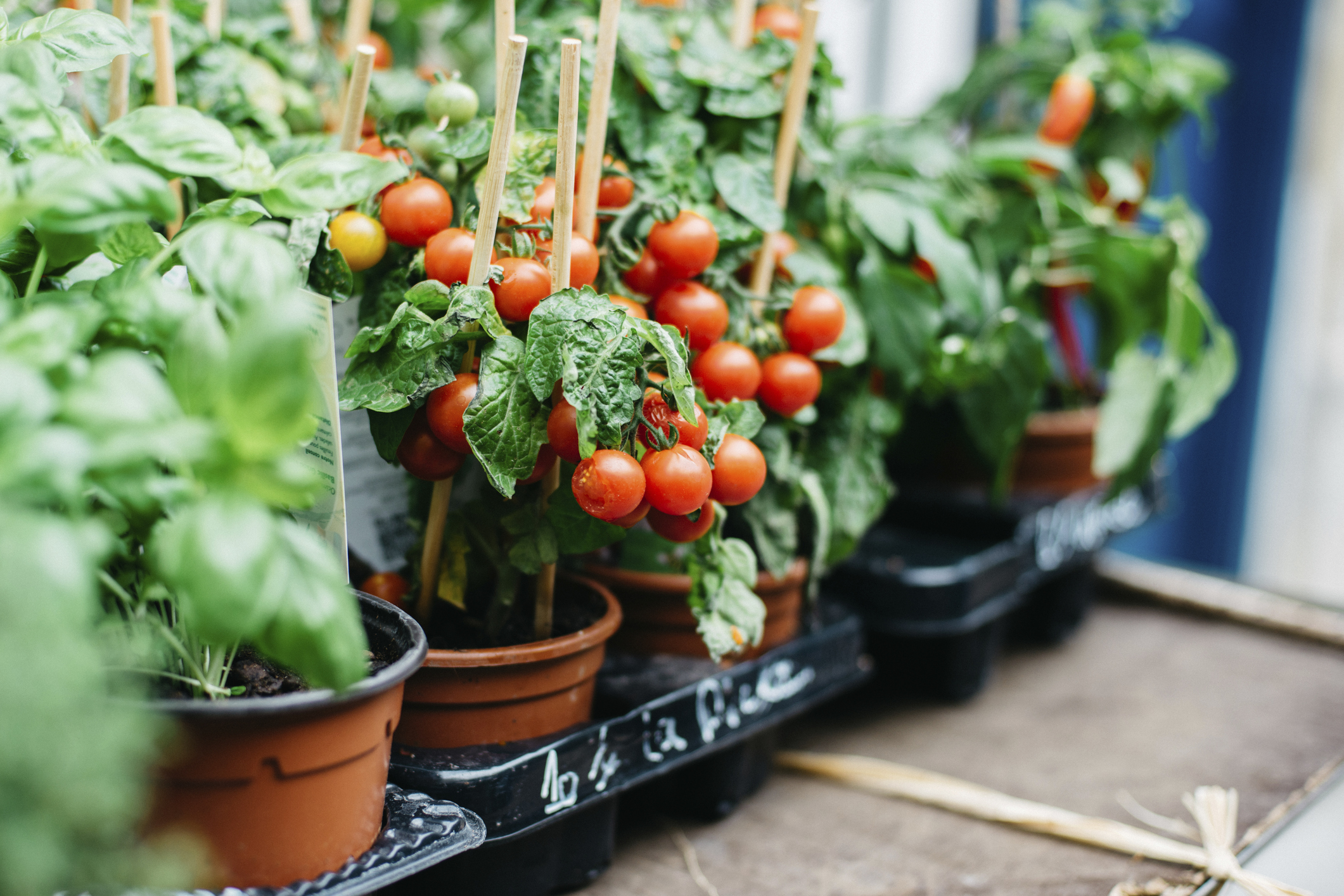
How to grow tomatoes?
There are two ways one can approach growing tomatoes. The choice of a particular method depends mostly on how much time one wants to spend on tomato plant care. If you have plenty of time - you can purchase seeds and grow your own tomato seedlings at home. But if you are quite busy or have decided on your gardening adventure too late, you can buy seedlings at a gardening shop or from a private gardener from your area.
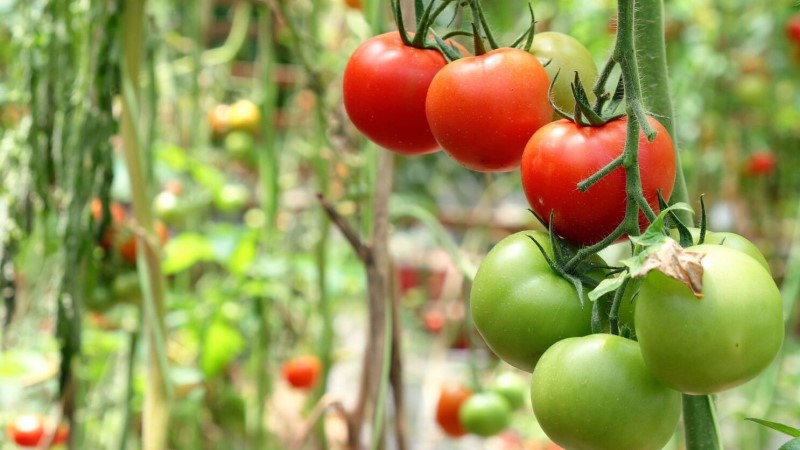
Growing tomatoes from seeds - how to grow tomato seedlings?
Growing tomatoes from seeds starts by preparing tomato seedlings. To do this, one has to plant the seeds in containers kept at home - or, if possible, in a greenhouse. The method you choose affects the time you can do it.
As for a greenhouse, growing tomatoes can be started very early - often as early as the end of December or the beginning of January. Are you wondering when to plant tomatoes grown indoors? In this case, there’s no need to hurry - you can do it at the end of February, in March, or even at the beginning of April.
The process of growing tomatoes from seeds greatly depends on the temperatures outside. If the spring freezes are lingering, you don’t have to hurry, as you won’t be able to plant the tomato seedlings into ground anyway. The right time for planting tomatoes is the moment the temperatures stabilize and remain at the minimum of 13-15°C (55.4-59 F) - both daily and nightly. This is the time you can plant the tomato seeds and prepare seedlings.

How to grow tomatoes from seeds?
When planting tomato seeds, make sure to spread them evenly between each other. It’s important to put a seed on the ground and cover it with a small layer of soil - up to 1 cm. Water the ground a little - be careful not to uncover the seed.
The initial phase of tomato plant care requires keeping a high enough temperature. It cannot be lower than 22°C (71.6 F). If you cannot reach that high temperature at the spot you place the pots, or if the temperature in the greenhouse is lower, you can cover them with a foil. This way, the seeds are provided with better conditions to sprout. In any case, don’t forget to water them regularly.
Make sure to carfeully observe if the seedlings started sprouting. When you notice the first signs - take the foil off. Lowering the temperature at this stage is very important - best if it’s 17-19°C (62.6-66.2 F).
What does it mean to prick out tomato seedlings?
The next step is pricking out the seedlings. It means that if there are several plants in one pot, they have to be separated into separate containers. Be careful not to damage the roots.
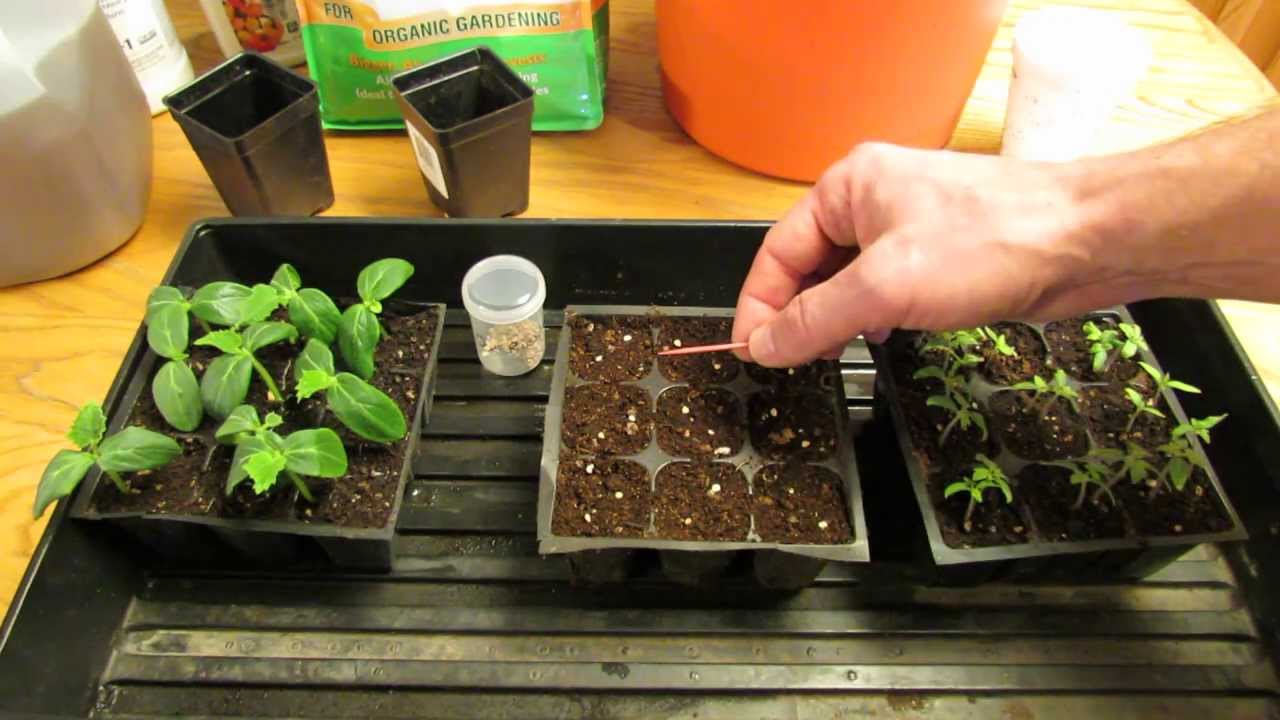
What does it mean to harden off tomato plants?
Before tomatoes can be transplanted into the ground, hardening off is a very important process. Thanks to this process, the plants are prepared enough so that weather conditions won’t harm them.
You should start hardening off your tomatoes about 7-10 days before planting them in the ground. To do this, lower the temperature they are kept in. It shouldn’t exceed 10°C (50 F). Also, limit the watering of your tomato plants and provide them with plenty of fresh air.
Such a preparation before planting the tomatoes is crucial. Thanks to it, you can be sure that the plant will take root and start growing properly.

How to plant tomatoes? Practical tomato growing tips
If you already know when to plant tomatoes, you should learn what to do with the seedlings so that you get beautiful plants. Growing tomatoes cannot involve random actions. Every, even the smallest detail is meaningful here. You should, therefore, pay attention to the following issues:
- choosing the right spot in your garden,
- checking the soil type and acidity,
- protecting the spot against strong wind.
When planting tomatoes in the ground, make sure to pick the right spot for the plant. It should be sunny - this way you can be sure that your tomatoes will be juicy and sweet.
A proper tomato plant care also requires good soil. Tomato plants like fertile ground - rich in humus and slightly acidic. It also should be permeable and humid.
If you’re hoping for a good growth and rich produce from your tomatoes, make sure to follow certain rules. Get to know what to plant with tomatoes and what is better to avoid. For instance, planting tomatoes near potatoes is one of the worst ideas, as it makes them vulnerable to pests and diseases. You should also separate tomatoes and peppers and avoid planting them in a spot peppers grew previously. Also, tomato seedlings don’t like soils after solanaceous plants such as an eggplant.

Planting tomatoes - what about spacing?
Proper spacing between tomatoes is highly important during planting. The distance depends on how much a particular variety spreads. We recommend planting tomato seedlings at least 40-50 cm apart. This way, they have enoguh space for growth, and the plant receives enough sunlight.
Growing tomatoes - it’s not enough to just plant them! How to fertilize the plants?
Fertilizing the soil before planting tomatoes is particularly important if doesn’t meet the basic requirements. It is advised to use natural manure - you can make it yourself or purchase it. It can be used both in autumn, when there are no more plants in the ground, as well as in very early spring - if the ground is not too frozen.
As an alternative for manure, you can also use a tomato multi-ingredient fertilizer. You can purchase it at any gardening shop.
How to grow tomatoes? Tomato plant care
Proper planting of the tomatoes in the ground is a half of the success. Further care of the plants is also very important. It requires many actions, and every one of them might be crucial for achieving tasty and healthy vegetables.
Depending on what type of tomatoes you choose, some of them require using gardening tools and canes, so that the plants don’t lie on the ground. The canes must be firm enough to be able to hold the plant and the fruits in the future.
Experts warn against using wooden sticks, as they typically develop harmful for the plants fungi. Bamboo or stable metal canes are a much better option.
Other actions one should take when growing tomatoes:
- pruning - it’s done so that the plants produce fruit and the tomatoes are larger and tastier,
- topping - the top of the main branch is removed, which speeds the process of ripening.
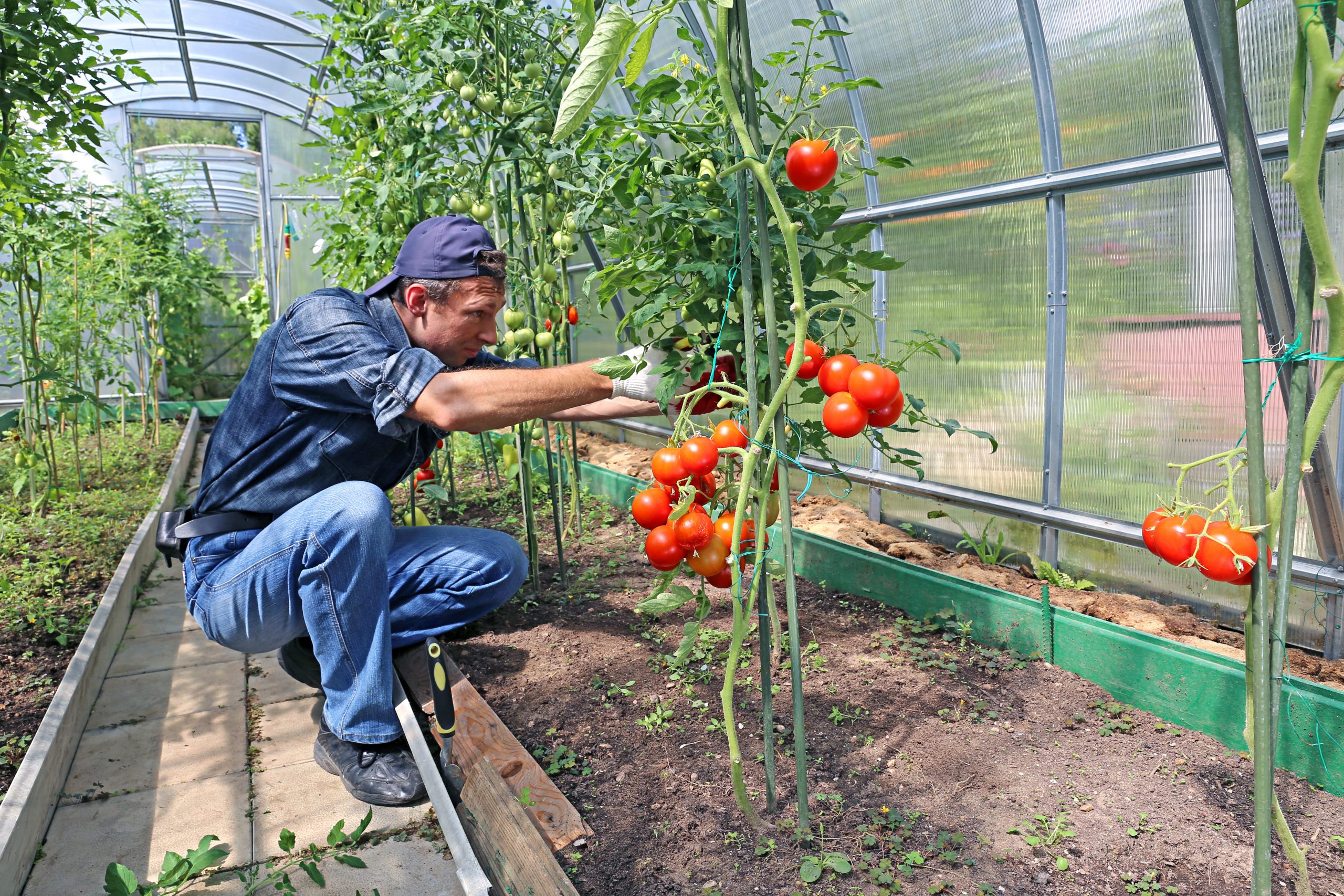
Watering tomato plants - how to do it?
Regular watering of tomato plants is one of the most important actions. Thanks to this, the plants can grow properly. Nonetheless, don’t go overboard with the water. Tu much humidity leads to many serious diseases and promotes fungal growth. So, make sure to be careful.
How often to water tomatoes, then? If the temperatures are moderate, once a week is enough. As for the amount - about 2 liters per one shrub is just enough. Of course, if the temperatures are very high and the soil is dry, you should increase the intensity of watering and control the substrate.
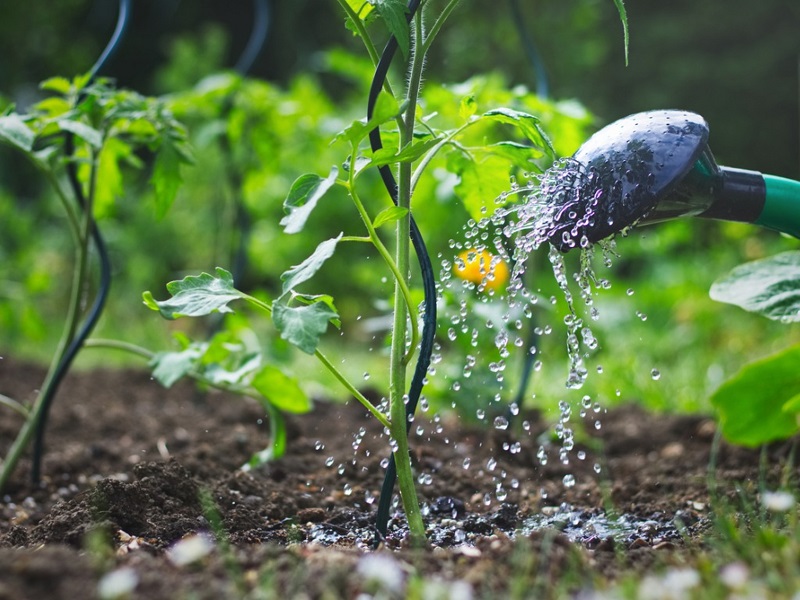
Growing tomatoes - how to prevent tomato diseases?
Similar to other plants growing in your garden, tomatoes might catch a disease. You can prevent certain factors by proper planting and care of the tomatoes.
The following list contains the most common tomato diseases:
- botrytis - it usually appears if the plant grows in a too humid soil,
- blight - it typically appears if tomatoes are planted by potatoes, which is not recommended (if it occurs, you can fight with it using horsetail tea sprays or nettle slurry, but they are not always effective).
- early blight - a disease caused by _Alternaria _fungi, appears as dry patches on leaves.
The basic actions to prevent tomato disease involve, first of all, carefully choosing the plants growing in the garden, checking the soil and proper tomato care.
As soon as you notice a problem, start fighting with it using home-made remedies. In this case, various sprays based on fresh herbs or milk might help. They are not only effective, but also safe for the plants. You can use them to get rid of aphids as well. If they don’t help, it’s recommended to choose stronger chemicals - after a consultation with specialists from a gardening centre.
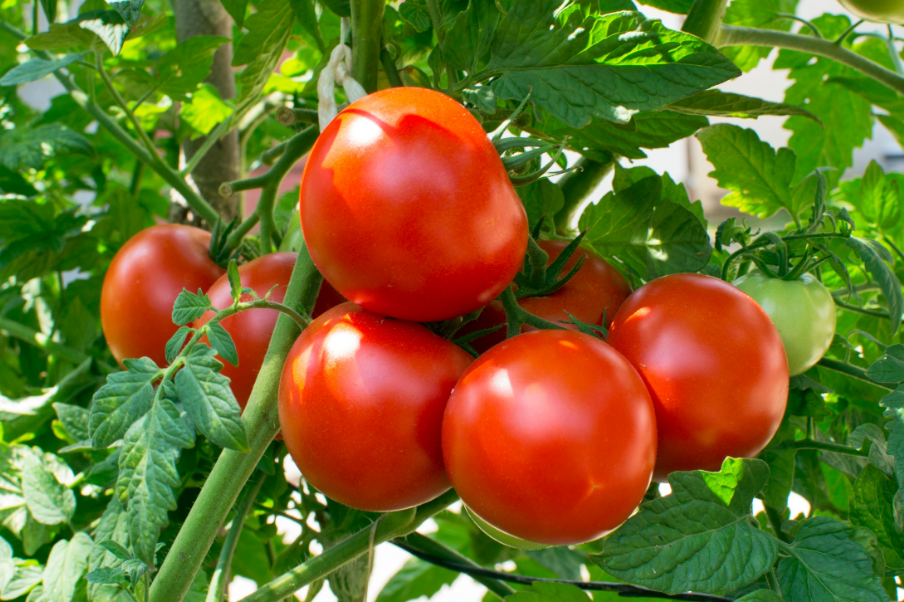
What types of tomatoes are best for outdoor planting?
There are many different types of tomatoes. Some are meant to be grown in pots and are perfect as balcony plants. Others can be grown in a greenhouse. Nonetheless, the great majority of tomato plants are grown outside. The following are the most popular ones:
- raspberry tomato,
- cherry tomato,
- plum tomato,
- oxheart tomato,
- currant tomato,
- beefsteak tomato.
There are many local subvarieties one can find within those categories. Keep in mind that the most popular varieties are perfect for growing outdoors, as well as indoors. You can, therefore, choose what’s better for you: planting tomatoes in containers or growing them outside.
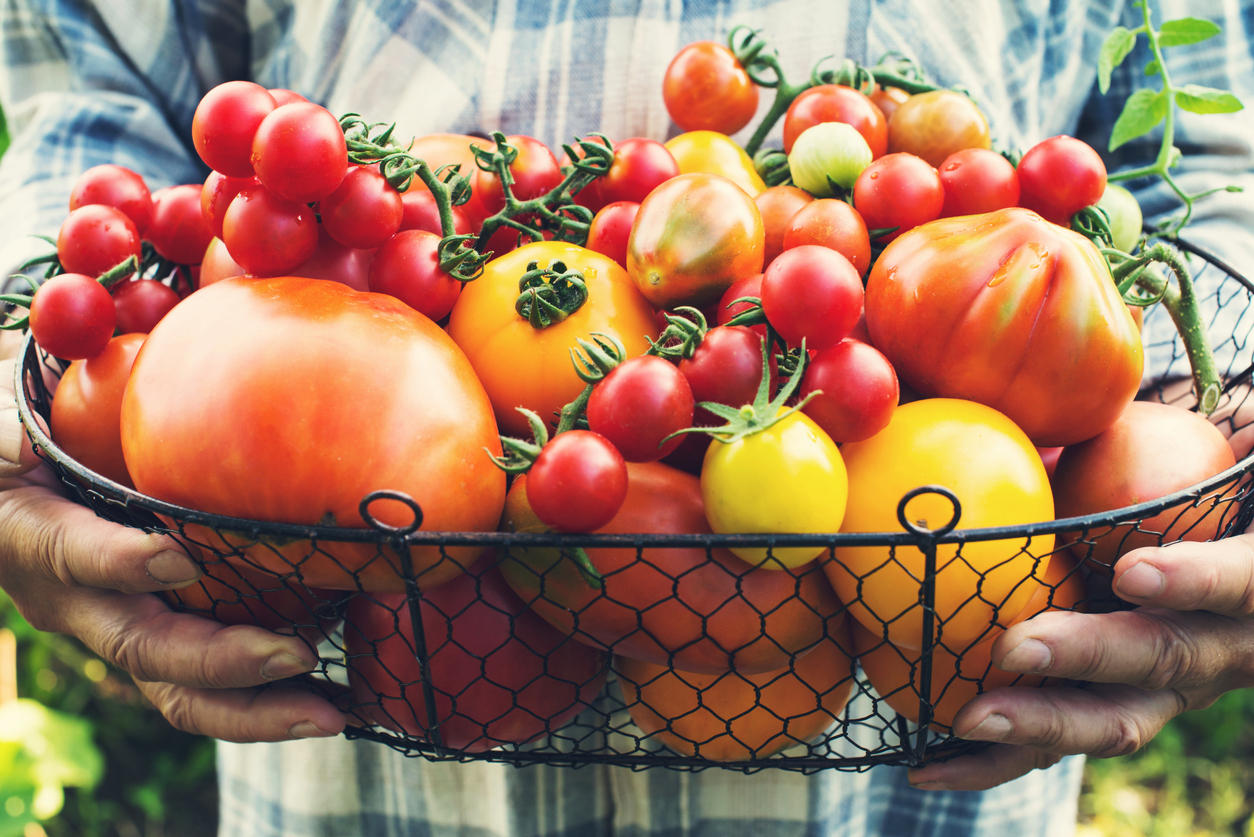
📍 What is the best time to plant tomatoes under foil?
If you have grown your seedlings under foil, you can transplant them as soon as leaves appear. It all depends in when the seeds have been planted. Keep in mind that if the young plants are growing in better conditions, you should harden them off before transplanting.
📍 When to plant tomatoes outside?
You can plant tomatoes outside as soon as the risk of frosts disappears, and the temperatures stays at 13-15°C (55.4-59 F) - both at night and during the day. Planting tomatoes outside can be started in the second half of May. But it all depends on the weather conditions and the development of seedlings.
📍 Growing tomatoes in a greenhouse - when to plant them?
Planting tomatoes in a greenhouse can began at the beginning of April - if seeds have been planted before. The seedlings have to be well developed. Sometimes, the variety of the tomato is also a key factor.
Featured articles




